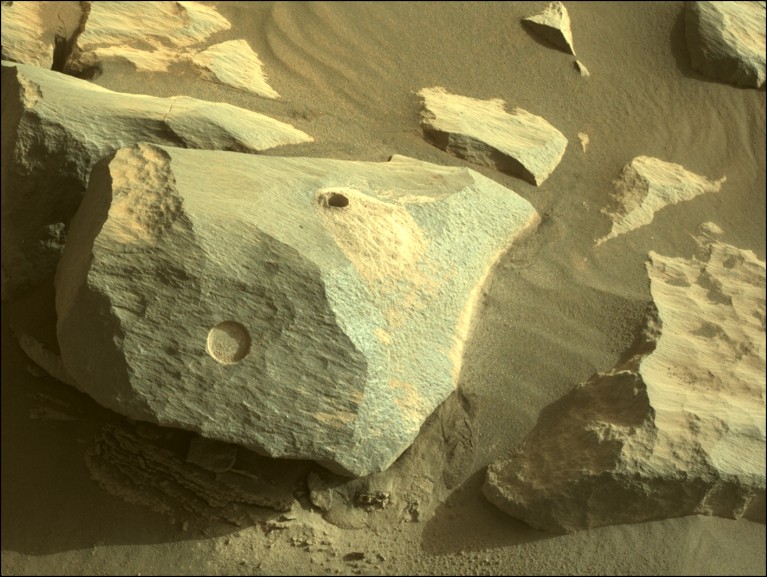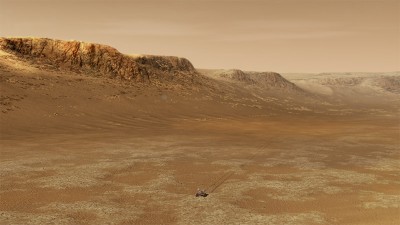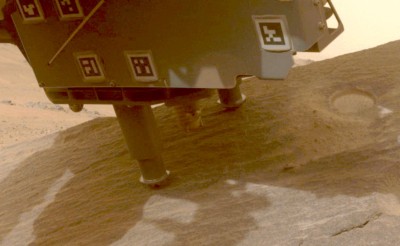
A picture taken by NASA’s Mars Perseverance rover of a rock that it sampled near its landing site in Jezero Crater. Credit: NASA/JPL-Caltech
NASA has again put off deciding how to accomplish one of its highest-profile missions in decades: bringing rocks back from Mars.
Following years of ballooning cost estimates, the agency promised in April to develop a cheaper method for Mars sample return. But on 7 January it kicked the can down the road, saying it would continue to explore two options, one using well-tested NASA technology and the other relying on systems being developed by private aerospace companies.

The hunt for life on Mars: A visual guide to NASA’s latest mission
The final decision isn’t expected until 2026. The earliest the NASA spacecraft could launch would be 2031, with the samples coming to Earth no earlier than 2035. Costs for either option range from around US$6 billion to $7 billion — less than earlier estimates of up to $11 billion, but still a major challenge for the cash-strapped agency.
“I’m disappointed we don’t have an entirely clear path forward yet,” says Victoria Hamilton, a planetary geologist at the Southwest Research Institute in Boulder, Colorado, who chairs a group that provides community input to NASA on its Mars exploration plans. She notes that Mars sample return has been a top priority for US planetary science for decades and that the community is keen for it to get underway.
Challenging delivery
No nation has brought Mars samples to Earth, although China is working on plans to do so as early as 2031. Having Martian rocks on Earth would allow scientists to conduct far more sophisticated analyses than rovers can do on the red planet. Keeping both design options for now “will help us achieve delivering this science for everybody,” said Nicola Fox, NASA’s associate administrator for science, during a media briefing.
NASA’s goal is to bring back 30 of the tubes of Martian rock, dust and air that the agency’s Perseverance rover has collected from a diversity of geological environments over the past few years in its landing site, Jezero Crater. The rover has traveled across an ancient river delta and out of the crater, into a realm of ancient Martian rocks that have never before been explored.

NASA admits plan to bring Mars rocks to Earth won’t work — and seeks fresh ideas
NASA put its Mars sample return plans on hold last year while it solicited fresh ideas from businesses and the public about how to do it for less than $11 billion. Based on that feedback, NASA administrator Bill Nelson chose to pursue the two-option approach.






